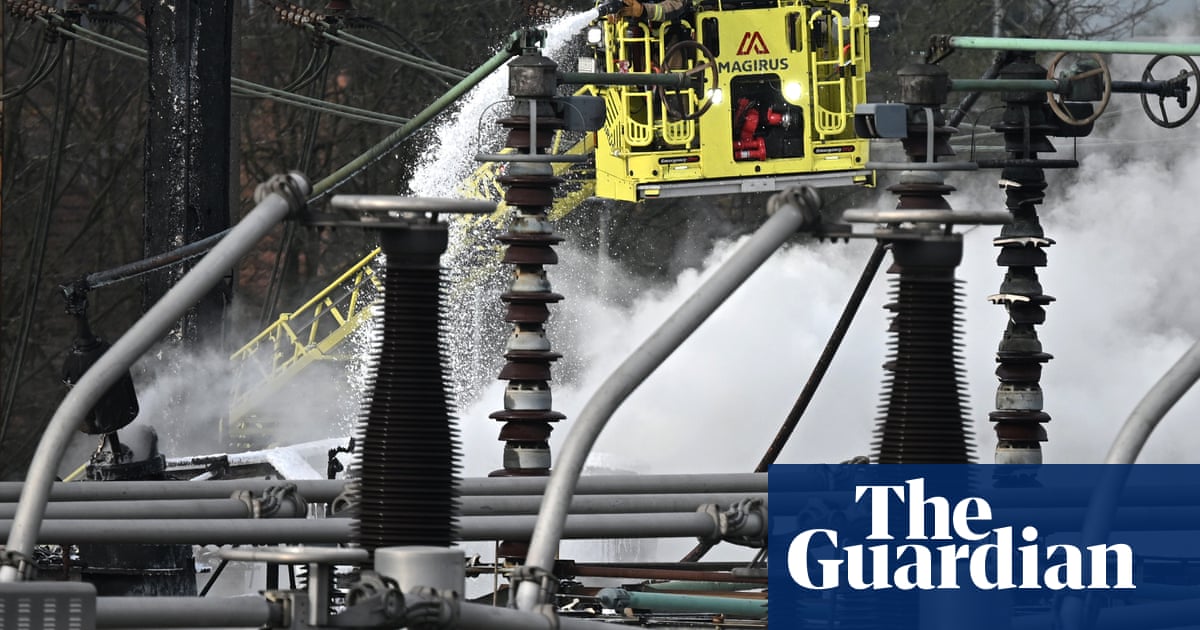Investigators have so far failed to find the root cause of a large fire at a substation six weeks after it left almost 70,000 homes without power and shutHeathrow airport.
After an urgent investigation ordered by the government, the National Energy System Operator (Neso) said it had ruled out any suspicious activity.
The state-owned body promised to continue to investigate the maintenance history and design of the key west London power substation thatcaught fire in late Marchto establish whether it was meeting its legal requirements.
Heathrow closed for almost 24 hours last month after the fire at the high-voltage substation in Hayes, west London, cut power to the airport, affecting more than 1,350 flights and almost 300,000 passengers. About 67,000 homes were left without power.
Neso said a dedicated team reviewed more than 600 pieces of evidence from the companies involved in the incident to inform its interim report. It expects to publish a final report by the end of June.
In late March, Ed Miliband, the energy secretary, ordered the system operator to undertake an “urgent” investigation into what happened and provide its initial findings within six weeks of the blaze.
On Thursday, he said: “The National Energy System Operator’s initial summary of the incident rules out the possibility of any suspicious activity.
“We now await the full report to understand what happened and learn lessons to strengthen UK energy resilience and protect our critical national infrastructure.”
The energy companies involved in the power outage will also face an inquiry by the industry’s regulator, Ofgem, which is responsible for approving the investments and revenues of electricity network operators.
Heathrow will also launch an internal investigation into its resilience, led by Ruth Kelly, the former secretary of state for transport and independent board member of the airport.
Executives from the energy and airline industries were summoned within days of the outage toappear before parliament’s cross-party transport select committee.
Heathrow’s chief executive, Thomas Woldbye, apologised for the disruption. He told MPs that a power outage on this scale had been seen as a “very low probability event” and the airport had paid for a “supposedly resilient” supply.
Sign up toBusiness Today
Get set for the working day – we'll point you to all the business news and analysis you need every morning
after newsletter promotion
However, Nigel Wicking, the chief executive of Heathrow Airline Operators’ Committee, which represents airlines, said Heathrow had been warned about risks to its power supply days before theairport was shut downby the substation fire.
Heathrow airport said on Thursday the report raised questions for National Grid – the owner of the substation that caught fire – and Scottish and Southern Electricity Networks (SSEN), responsible for power distribution in the area.
A spokesperson said: “Heathrow welcomes the Neso review’s initial report, which raises important questions for National Grid and SSEN that we hope the final report will provide answers to, including the cause of the fire.
“Further clarity on how the fire started and why two transformers were subsequently impacted can help ensure greater resilience for the UK’s energy grid moving forward.”
